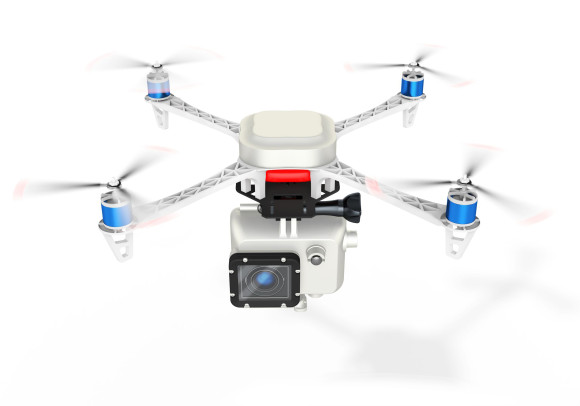Unmanned aerial systems, or drones as they are more commonly known, could serve important roles for property/casualty insurance companies, many of which have already begun planning to make use of the technology.
By enabling swifter claims servicing in disaster areas and other places closed by government agencies or deemed unsafe for human adjusters, drones could help companies settle claims faster for victims of natural disasters. On a day-to-day basis, insurance underwriters and claims adjusters could use drones to more safely examine pitched roofs and other potentially dangerous conditions.
However, commercial use of drones is currently prohibited under federal law, although some companies – including several insurers – have received exemptions from the Federal Aviation Administration allowing them to use drones for specific purposes. The FAA has proposed more permanent regulations that would eliminate the need for the case-by-case exemptions, but these, too, present challenges.
The proposed rules would allow for commercial use of drones weighing less than 55 pounds, to go no faster than 100 mph, and no higher than 500 feet. Additionally, the drone would be required to stay within the line of sight of the operator or an observer working with the operator. It would also be prohibited from flying over any person not directly involved in the operation.
If adopted the proposed rules won’t take effect until next year at the earliest. But it’s easy to see how such rules could limit drone use in urban or suburban areas where it would be very difficult not to fly over people during inspections or claims adjusting. Or how in rural parts of the country the line of sight requirement could reduce the efficiency drones provide to farmers overseeing large fields of crop or livestock.
In comments to the FAA, NAMIC said the proposed FAA rules are a very good first step, but added that some of the rules – particularly the required line of sight and the prohibition against overhead flights – will need to be tempered for commercial drone use to really develop.
Further complicating the issue is that it is by no means clear which government authorities can and will regulate how drones are used.
The FAA’s proposed rules focus on safety in the national airspace. However, the Commerce Department is looking at privacy issues; the Federal Communications Commission will review communications issues; and Departments of Justice and Homeland Security will opine on cybersecurity and national security issues. Further limits or regulations governing drone use could also be imposed at the state and local levels.
Such limits and controls are likely due to the public perception of drones, which is largely unfavorable. A Chubb Group survey found that 73 percent of respondents worried a drone could crash into their house; 55 percent worried that drones could poke out an eye or cause other bodily injury; and 78 percent were concerned that America could become a surveillance state.
Property/casualty insurers are ready and willing to make use of drone technology to make their operations safer and more efficient and also to provide coverage for commercial policyholders who are looking to do the same for their own companies.
But doing so requires an understanding of what constitutes appropriate drone use, and setting the “rules of the road” that could help in establishing liability when accidents inevitably happen. Unfortunately, the regulatory process continues to move at a far slower pace than the advancement of technology, but NAMIC is continuing to work to ensure that the final outcome will be a system that is safe, secure, and effective for all Americans.
Topics Legislation
Was this article valuable?
Here are more articles you may enjoy.



 Howden US Tells Judge Brown & Brown Employees Fled Due to ‘Mistreatment’
Howden US Tells Judge Brown & Brown Employees Fled Due to ‘Mistreatment’  Abundant Reinsurance Capacity Accelerates Market Softening During 1/1 Renewals
Abundant Reinsurance Capacity Accelerates Market Softening During 1/1 Renewals  Verisk Pulls Plug on $2.4 Billion AccuLynx Deal After FTC Review Delay
Verisk Pulls Plug on $2.4 Billion AccuLynx Deal After FTC Review Delay  Disney Worker Injured Trying to Stop Runaway Boulder at Indiana Jones Show
Disney Worker Injured Trying to Stop Runaway Boulder at Indiana Jones Show 


